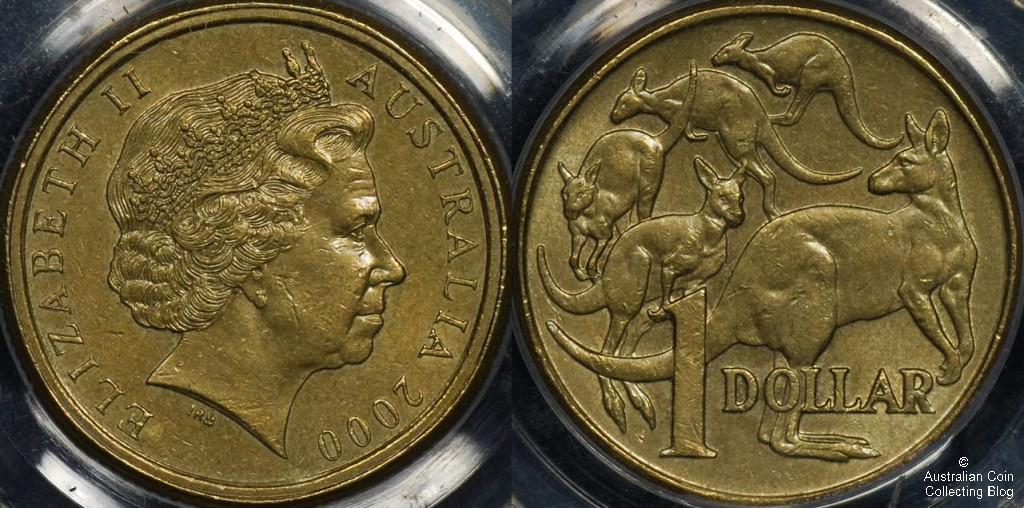In 2003 Australian coin collectors began to become aware of a major coin error that had been released by the Royal Australian Mint. A number of the year 2000 $1 dollar coins had been minted using the incorrect obverse die (heads side) and released into circulation but the error had not been found for a year or two. The obverse of some of the 2000 $1 dollar coins had been minted using the Australian 10 cent obverse die by mistake. With just a 1.4 millimetre difference in diameter between the 10 cent and $1 coin the error went unnoticed, and the legendary 2000 $1 ‘mule’ was released into the wild.
The majority of the 2000 $1 / 10 cent Mules were sent to Perth, where in 2003/2004 there was a frenzy of ‘mule’ hunting in the local casino and lots of dollar coins were withdrawn from Perth banks. This was the height of the ‘mule’ season with enthusiastic searchers finding 1 or more mules each day spent searching. With the mules fetching several hundred dollars each at the time it was a profitable and enjoyable way of spending a day. The ‘mule’ hunt has slowed in the last few years as the number available in circulation is slowly reduced and diluted around the rest of Australia. But, the mules are still out there to be found by those willing to look. For example, the coin above was found by the author in early 2008 at the Burswood casino in Perth. Examples discovered these days tend to be lower grades, showing a lot of wear and scuff marks, but with even low grade examples worth $300-$400 they are still worth finding.
Spotting a 2000 $1 / 10 cent mule isn’t difficult when you compare it with a normal $1 coin. The smaller 10 cent die means that there is a large double rim around the obverse of the coin, this can be seen clearly in the image of the coin above. Because the smaller die was used the obverse strike is often off centre, and the double rim equally off centre. On the coin above the obverse of the coin above is shifted toward the top of the coin. Mules with well centered obverse strikes tend to fetch more money than those like the coin above.
Total mintage of the 2000 $1 / 10 cent mule is a matter of some conjecture. However, a number of the more prolific mule hunters shared their find statistics on the now defunct Aussie Coins internet forum. From these figures and the large sample size searched (some hunters looked through upwards of 2 million coins) it was deduced that the mintage of the 2000 $1 mule was around 6000-7000. The mintage of 400 stated in the Pocket Guide to Australian Coin and Banknotes by Greg McDonald is simply incorrect so do not take any notice of this figure. The inaccuracy of this number is shown by the fact that the total number of mules discovered Australia wide is far in excess of 400, with some hunters having found more than 200 by themselves!
So, the next time you’re at the bank, or in the local poker machine venue, why not look through those $1 coins. You’ll never know what you might find, and if you are lucky enough to find a mule, then all it will have cost you is $1 and some time.


